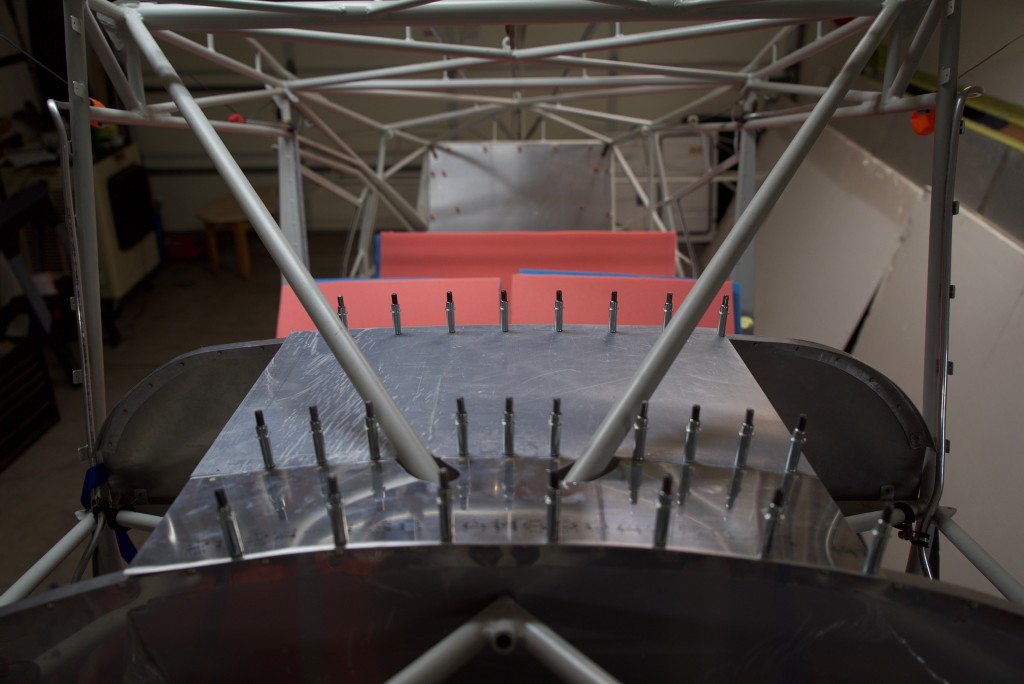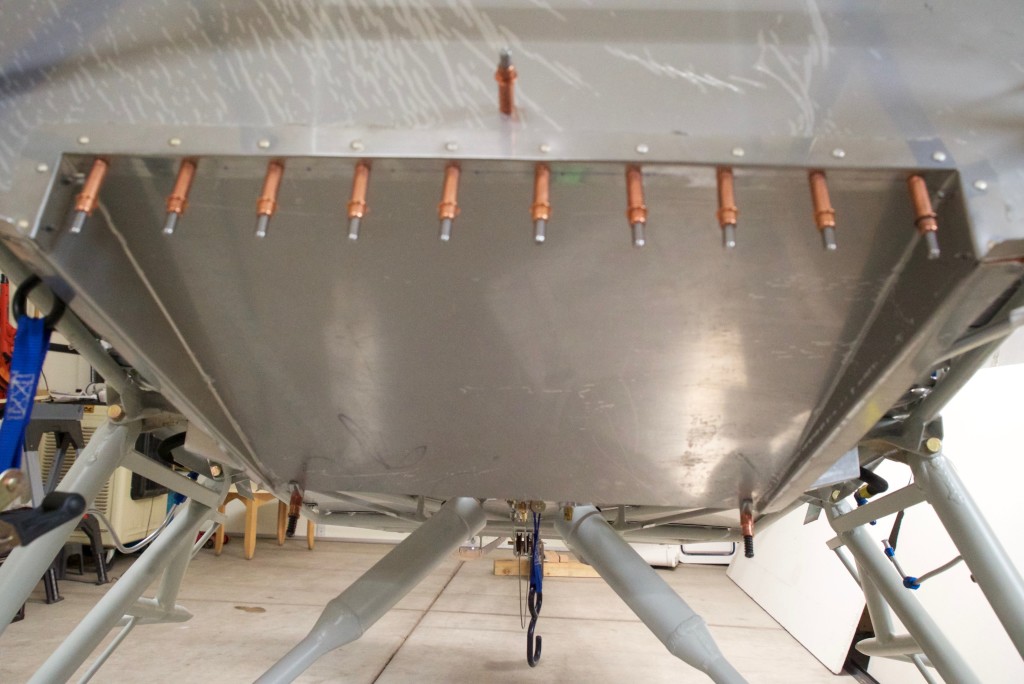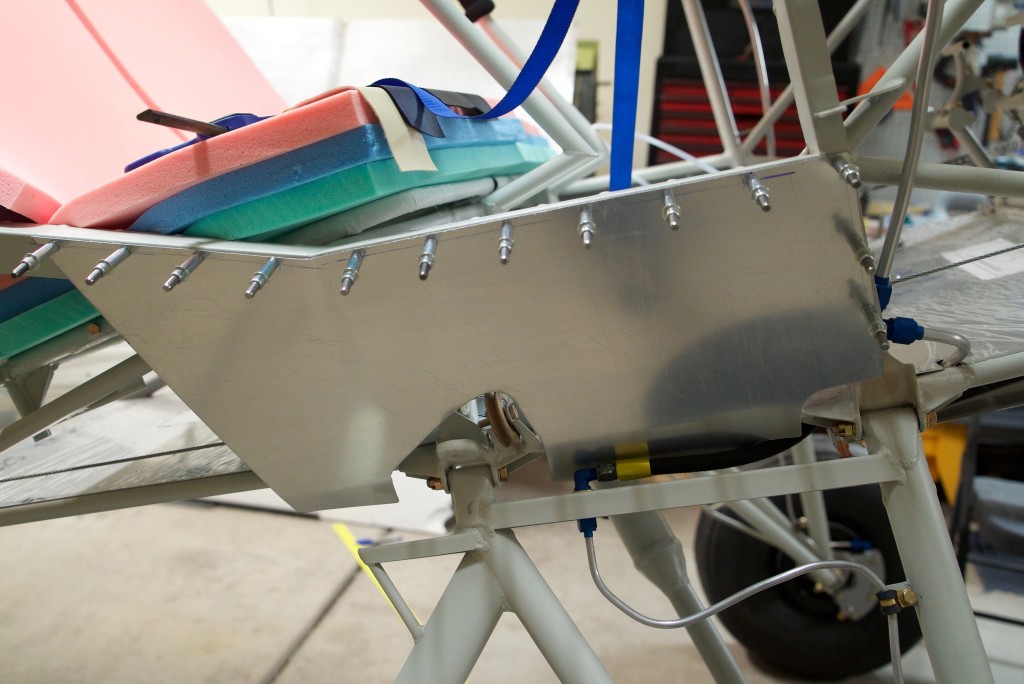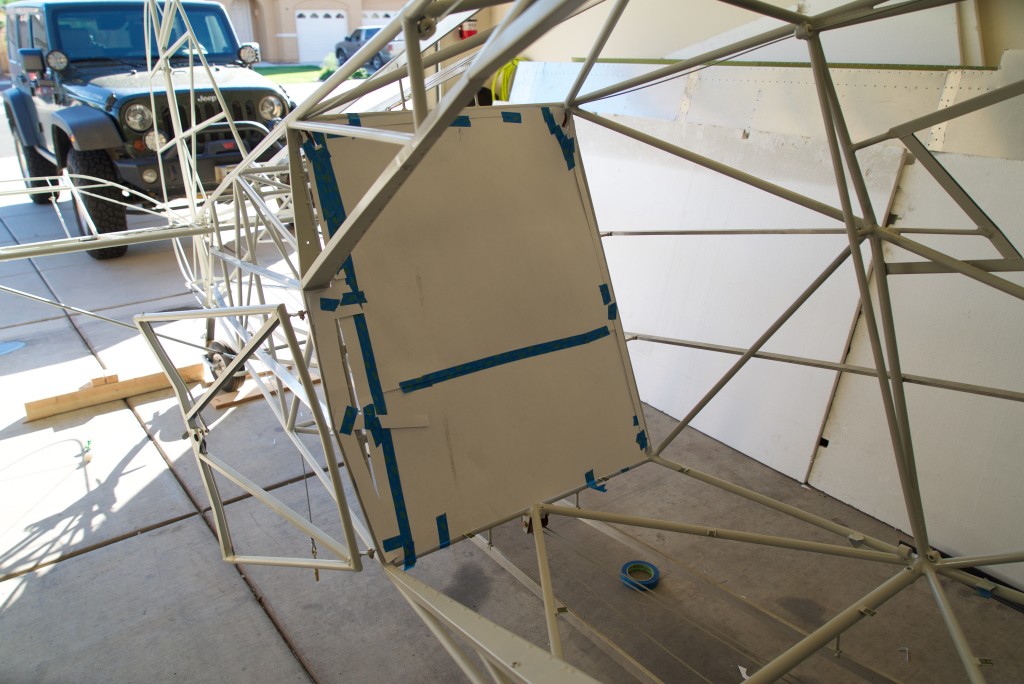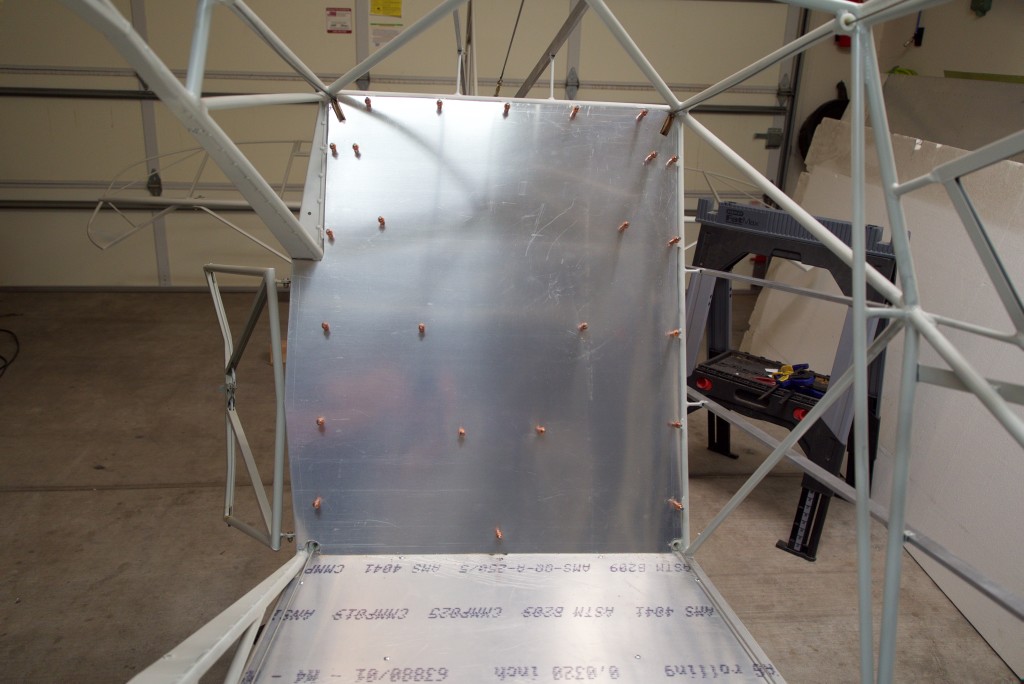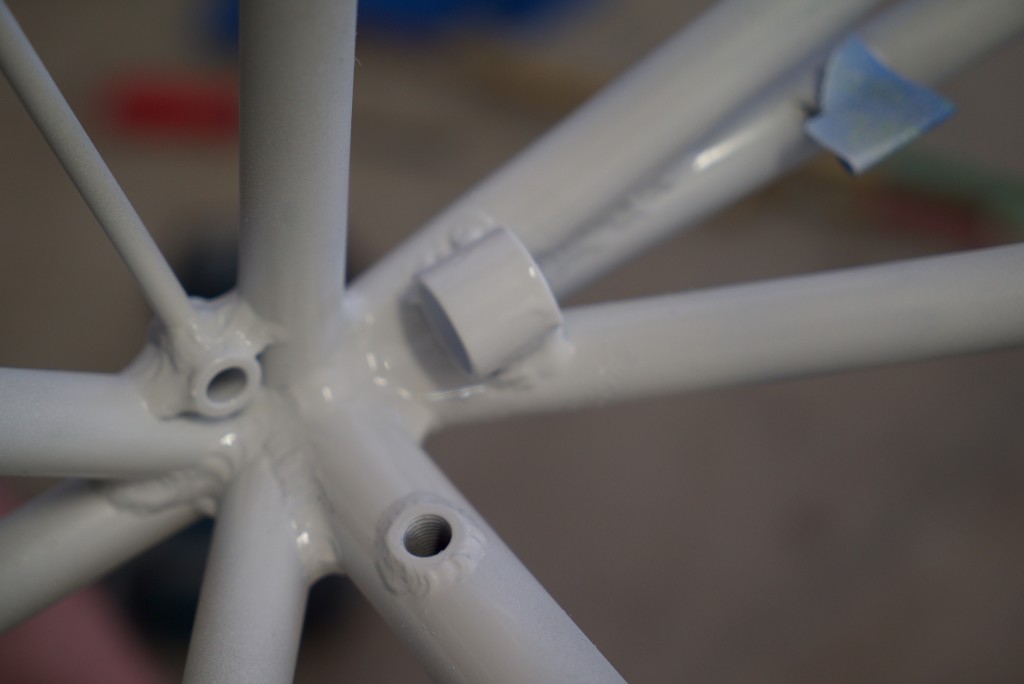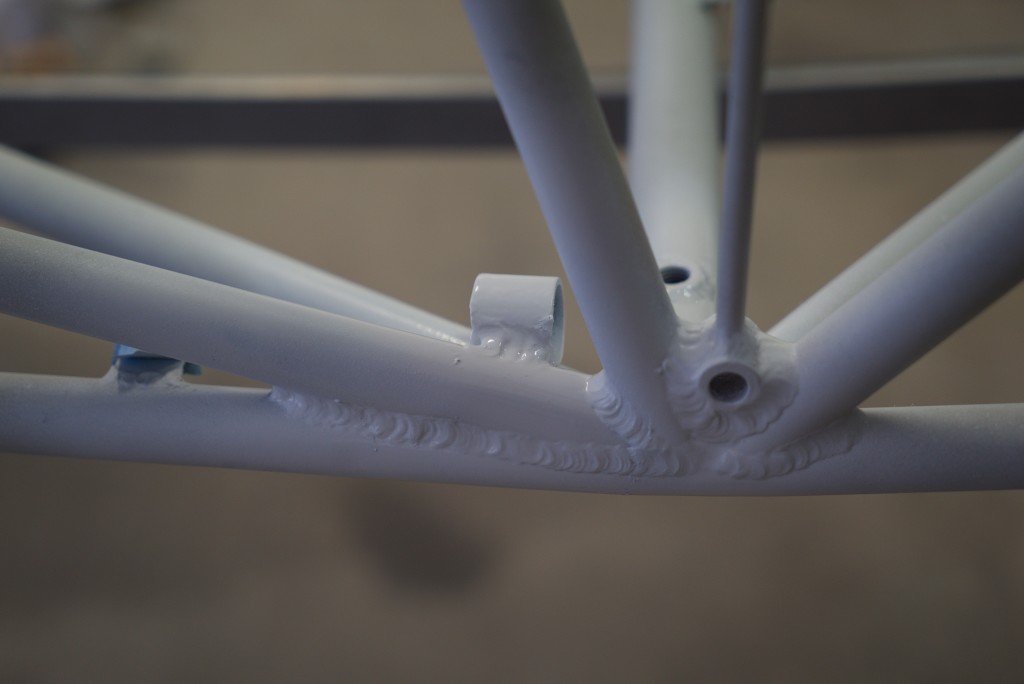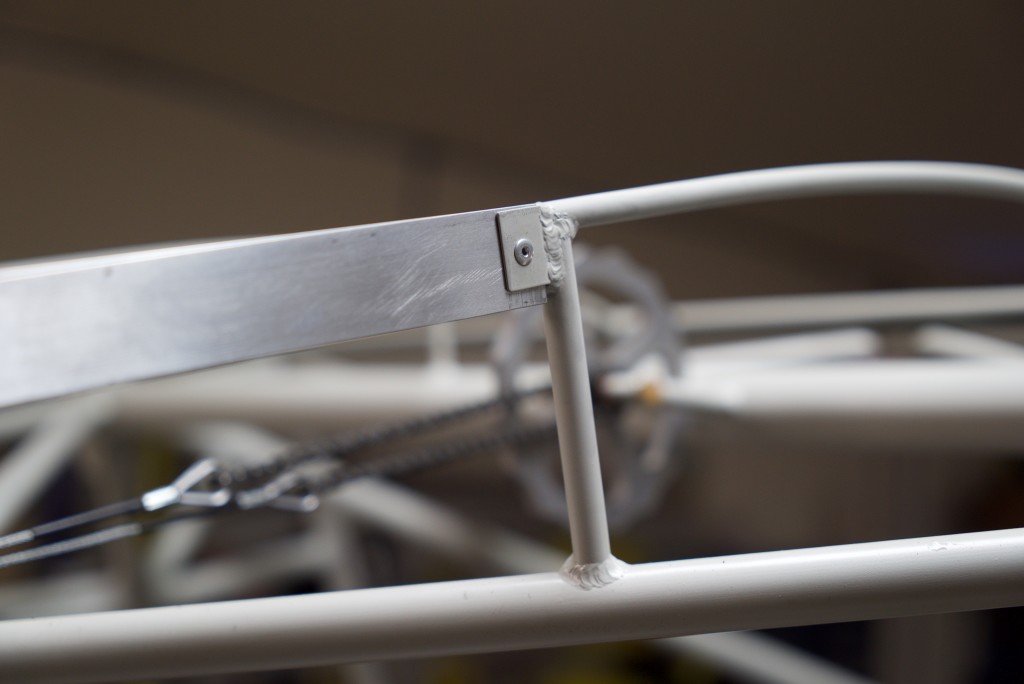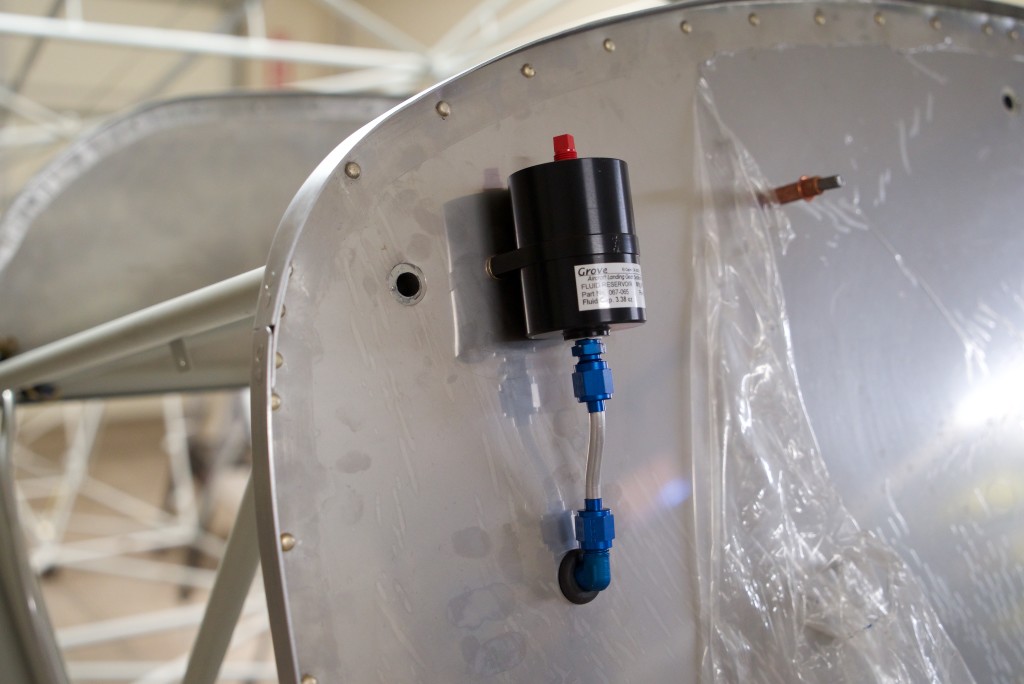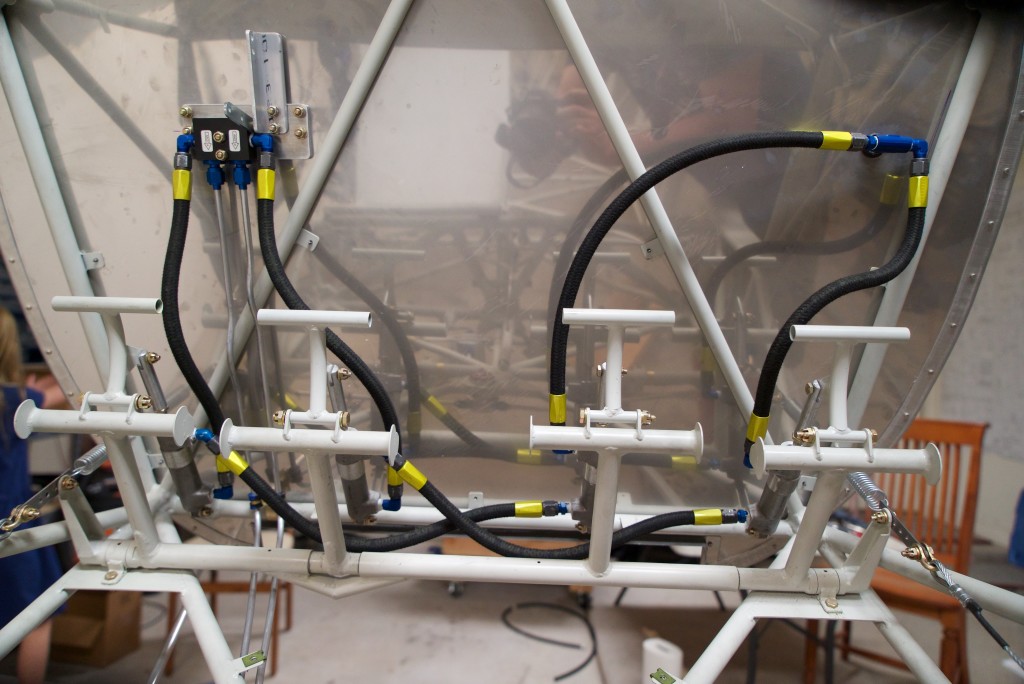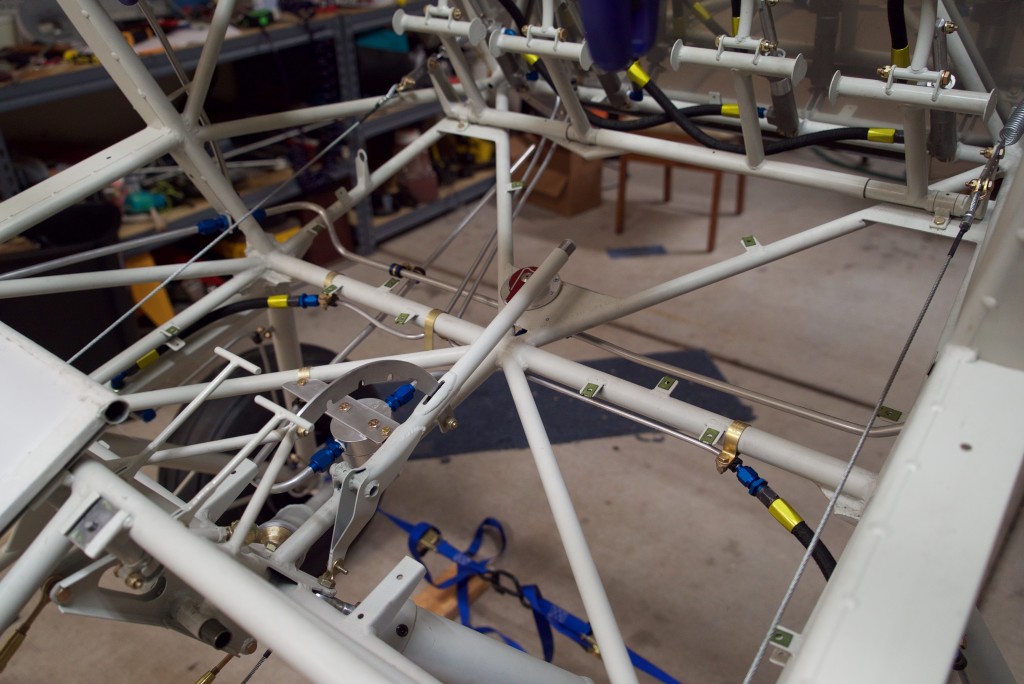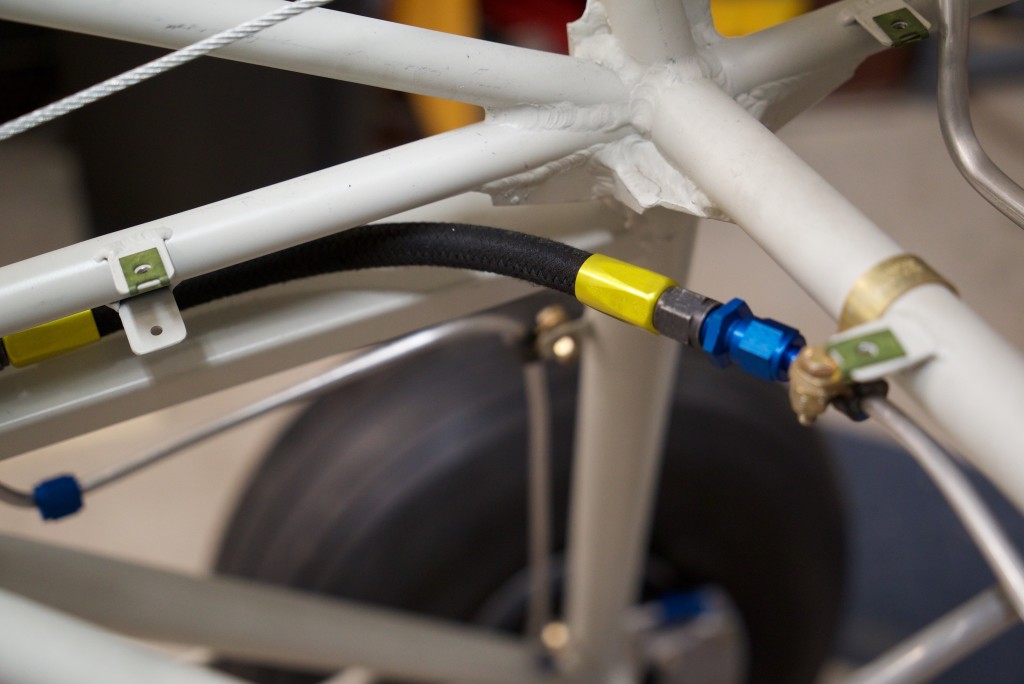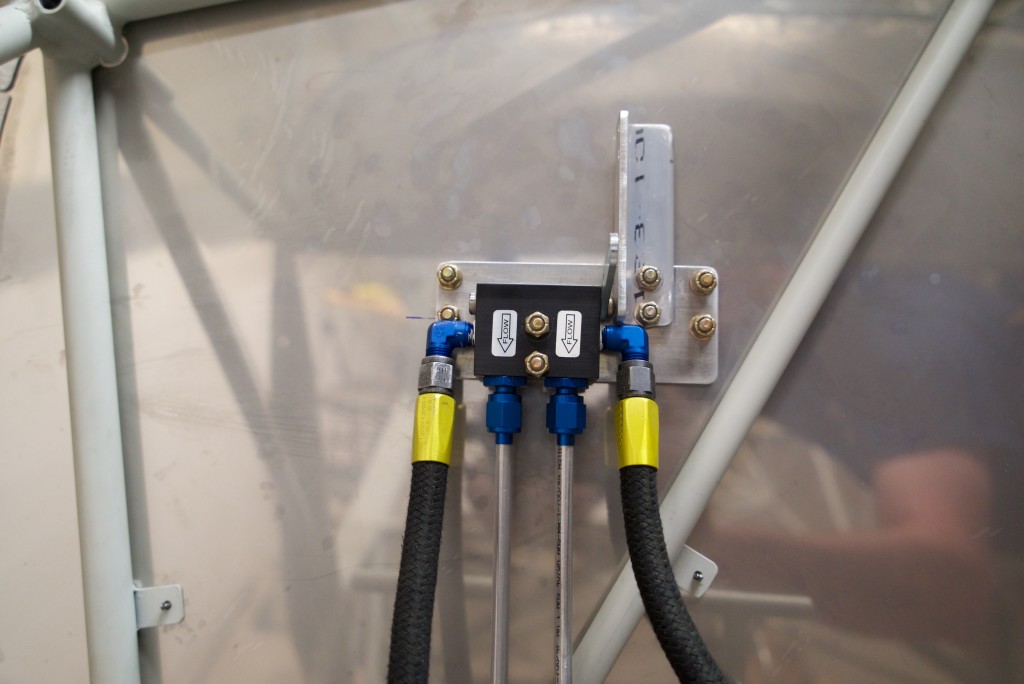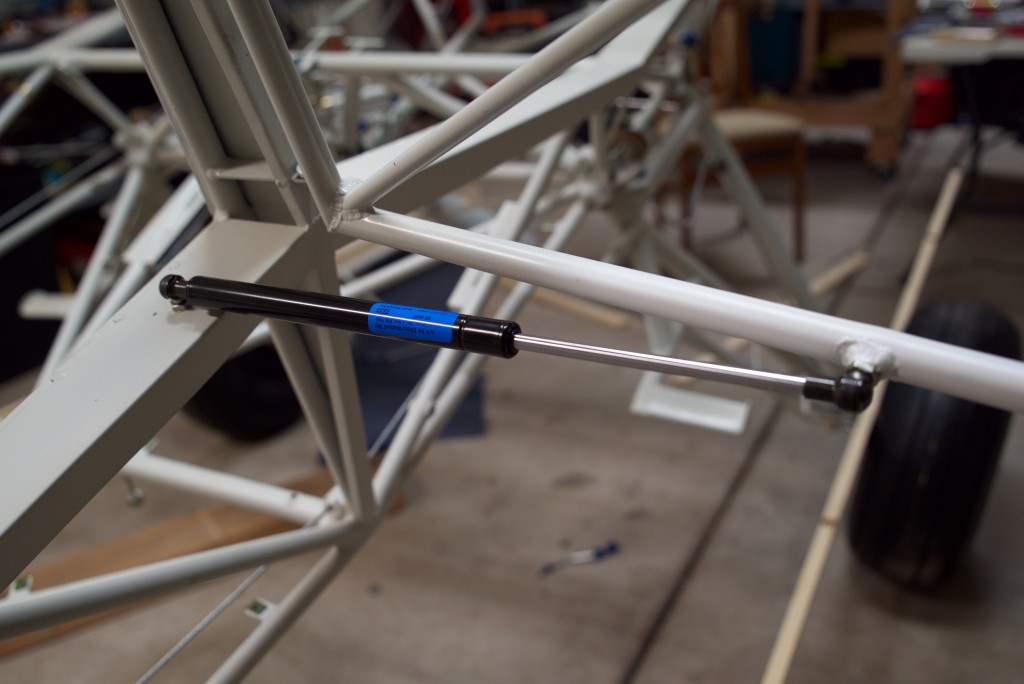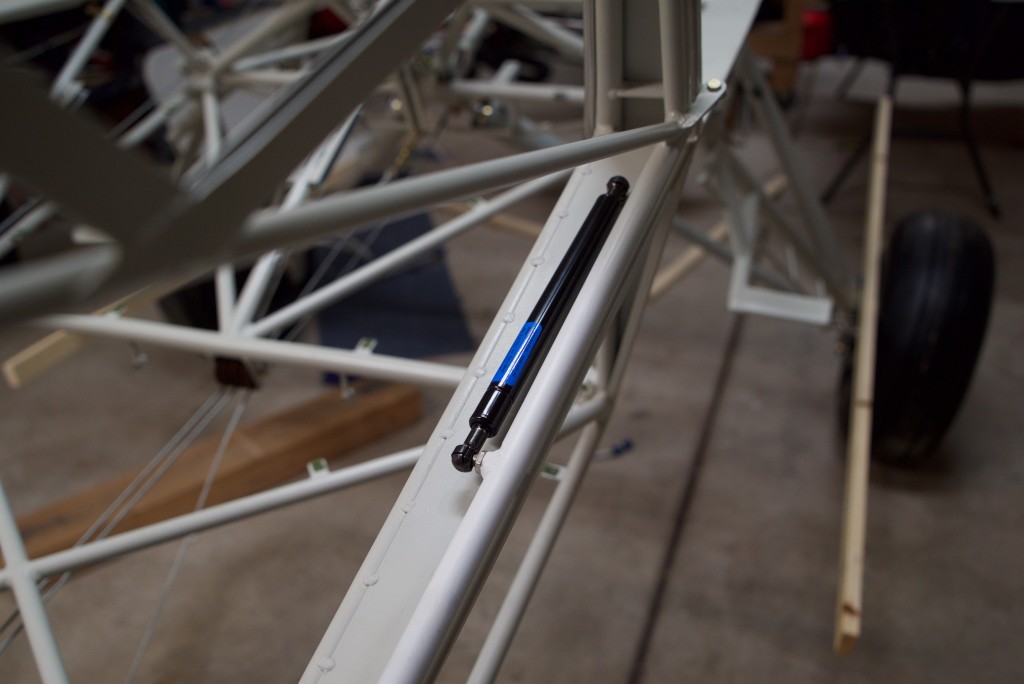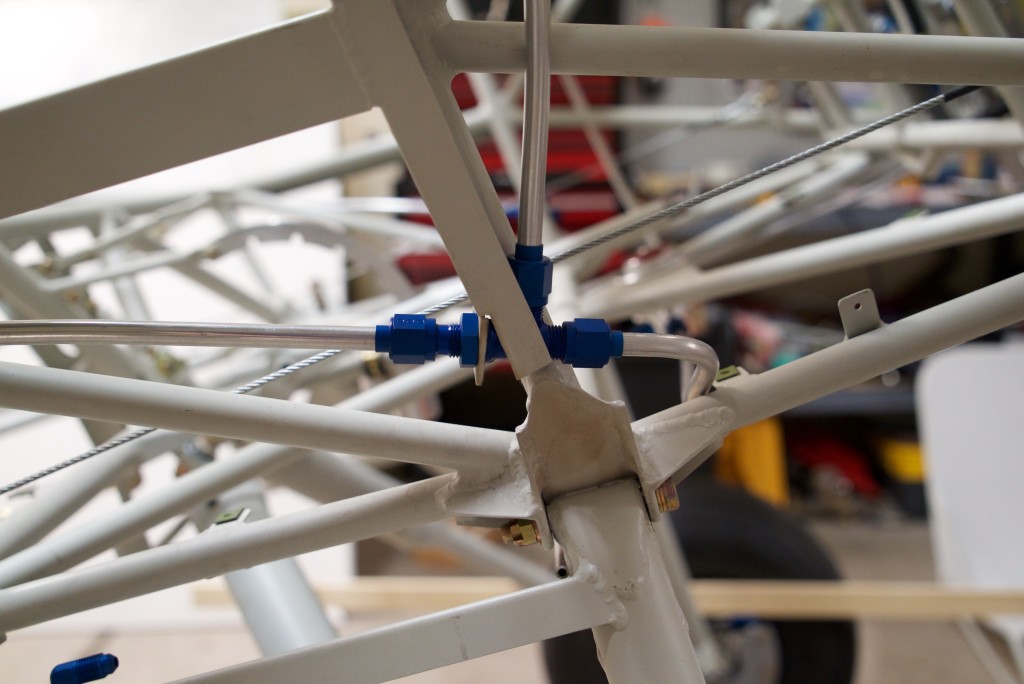The kit came with all the aluminum for the boot cowl. However, it’s up to you to build a removable panel if you so desire. Seeing as how working on the avionics would be much easier with a removable panel, I built it with a very large flush mounted one.
I decided to place some stiffeners along the seams and down the center. To make it look nice, everything was dimpled and put together with flush rivets. I love back riveting!
Finished product.


